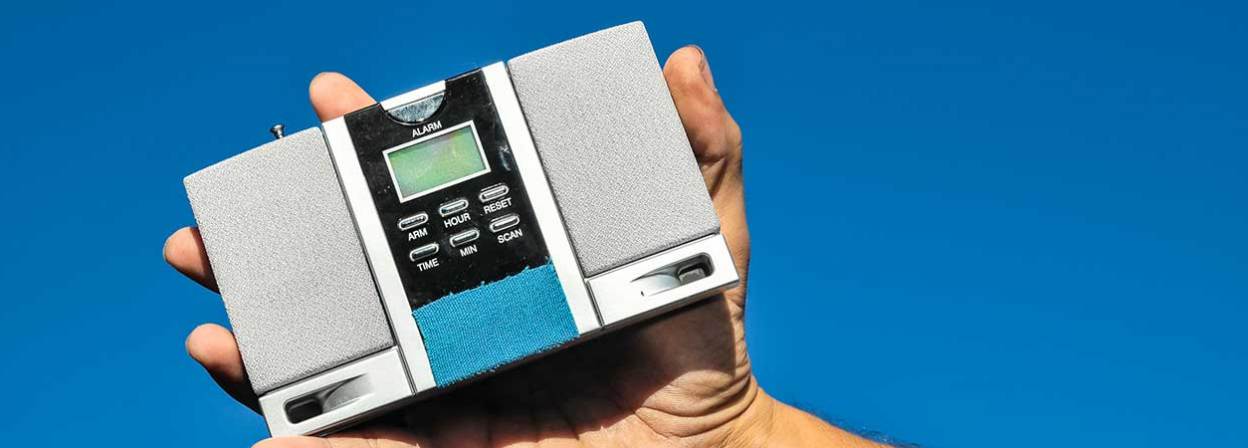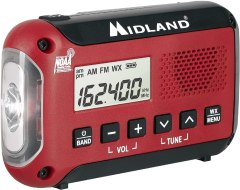Buying guide for Best weather radios
A weather radio is a tool that can warn you of incoming storms – and could save your life. While most weather radios serve the same function, they vary greatly in design and available features.
While all weather radios receive National Oceanic and Atmospheric Administration (NOAA) weather alerts, the alerts they receive and notify you of can differ. Some radios offer several sources of power, such as AC, solar panels, and hand cranks. You should consider whether your radio will sit in your home as an alert system or you’ll take it outdoors or on the road during emergencies. Additional features may include a flashlight, AM/FM radio, and USB ports.
There is plenty to think about when choosing a weather radio, and you want the right combination of features that will protect you and your family during an emergency. To learn more about weather radios, continue reading our guide, and when you’re ready to buy, check out our favorites.
Key considerations
What is a weather radio?
A weather radio is a device that alerts you to severe weather warnings from NOAA or a network of weather alert radio stations called the NOAA Weather Radio All Hazards (NWR) that broadcast continuously. Weather radios should not be confused with emergency radios, which have similar designs and features but aren’t specifically designed to provide alerts for your area.
There are two main types of weather radios: weather alert radios and weather band radios.
Weather alert radios are the more popular option. These serve primarily to warn you of incoming storms or emergencies. They automatically alert you of NOAA announcements and can sometimes be programmed for specific alert types. These radios are region based and often kept in the home or office.
Weather band radios must be tuned to weather alert stations and won’t automatically alert you to hazardous conditions. These are often used by people who don’t live in disaster-prone areas who want to get regular weather updates rather than emergency alerts.
Where will you use your weather radio?
Consider where you will use your weather radio and what situations you expect to need it for. Some weather alert radios are designed to be kept indoors to notify you of NOAA alerts. These are sometimes called desktop weather radios. Others are designed to be taken with you during an emergency, and some models may be designed for both indoor and outdoor use. The primary differences between indoor and outdoor radios are power source and portability.
Weather radio features
A weather radio is a tool that can provide invaluable aid before or during a disaster, so it’s important to plan ahead and know what you need. Let’s break down the key functions of a weather radio.
Alerts and alarms
The types of alerts a radio receives and its alarm system vary from one model to the next. You may not want to receive every NOAA alert for your region because a radio with a loud alarm could wake you up in the middle of the night for a non-dangerous weather event. Finding a radio with customizable alerts and alarms can be useful. These event- and area-specific alerts are convenient as well as safe because they may prevent you from turning off your potentially lifesaving device when you go to sleep.
Public alert certification: Some radios are public alert certified by the National Weather Service. This is a quick way to tell whether a radio will provide reliable alerts pertinent to your region.
Audible alarms: Radios with audible alarms notify you when an alert is being broadcast even if you have the volume turned down.
Alert blocking: This feature can turn specific alerts on or off, which can keep you notified of only the alerts pertinent to your situation and location. There’s no need to get flood alerts if you’re in a location that doesn’t experience floods.
SAME technology: One of the best features a weather radio can have is Specific Alert Message Encoding (SAME) technology. This function allows you to program your radio to alert you to weather events only your area. NOAA alerts tend to cover a broader region. This feature is typically found only on AC-powered indoor weather radios.
Weight and portability
If you opt for an outdoor weather radio, you should consider how easy it is to carry. A comfortable handle, lightweight design, and durable materials add up to a radio that can survive rough treatment. Some radios are water resistant or fully waterproof, too. If you live in hurricane or flood-prone areas, you may want to choose a waterproof model. Desktop weather radios aren’t designed to be portable and so tend to be heavier and bulkier.
Power
How your radio is powered and whether it can be recharged easily is an important factor.
AC adapter: These radios can be plugged into any wall outlet, which can provide power or recharge the battery. All indoor radios have AC adapters, but some outdoor models may as well.
Battery backup: Many models include a battery backup, which keeps your radio on when you don’t have a power source and can’t recharge it manually.
Hand crank: The classic choice for an on-the-go power source, a hand crank is an easy way to recharge your radio, but it can be tiring.
Solar panel: A solar panel is an easy way to recharge or power your radio, but it comes with the obvious drawback of requiring direct sunlight.
Flashlight
A built-in flashlight can be useful not only for lighting your way at night but also for signaling to other people in an emergency. Since using the flashlight function drains the battery quickly, you should use alternative light sources as often as possible, but this is an excellent feature to have in a weather radio.
AM/FM capability
For live updates other than weather, some weather radios include antennas capable of receiving AM/FM signals. Your area may have varying signal strength, which you should bear in mind if you opt for an AM/FM model.
Digital or analog tuning
If you have a weather band radio or an AM/FM radio, a traditional tuning knob can be difficult to use, particularly if the light is poor or you’re in a vehicle. Some models have LCD displays with digital tuning to quickly and accurately pick up signals.
Displays
A digital or LCD display screen can notify you of regular weather updates as well as severe weather alerts. These convenient screens may also display information like date, time, and battery level.
Bluetooth
Some weather radios can connect to a smartphone, computer, or other device to play music or other media. This feature should be used sparingly during emergencies to conserve power.
USB ports
A weather radio that is capable of recharging your smartphone and other devices can be incredibly useful in an emergency, particularly if you can recharge the radio with a hand crank or solar power.
Did you know?
Weather radios with multiple power sources are the most reliable option in a disaster and may even provide power to devices like smartphones.
STAFF
BestReviews
Weather radio prices
Inexpensive: Weather alert radios that cost $20 to $35 are typically portable and may include a hand crank or solar panel, AM/FM receiver, as well as a flashlight and USB port. Radios in this range are best used for emergencies only.
Mid-range: For $35 to $60 you’ll find more versatile weather alert radios that may be designed for desktop or portable use. These often include a handful of features like SAME technology, alarm programming, and backup batteries.
Expensive: For $60 to $180 are radios that range from durable pocket models to feature-packed desktop designs. Digital tuning and display screens are common in this price range, and many models are weatherproof.
Tips
Keep extra batteries on hand. It’s a good idea even if your weather radio includes power sources like solar power or a hand crank.
Tune in for the weekly NOAA test broadcast. You can see if your radio is receiving the signal from the nearest NOAA transmitter.
- Use an external antenna jack. It can improve the radio signal, which is useful indoors or outdoors.
Expert Tip
A battery backup is a great feature, but don’t rely on it when you have an available power source.
STAFF
BestReviews
Other products we considered
While our top recommendations are reliable radios to help you cope with a variety of weather disasters, there are a few other standout options available. For an ultra-compact, radio, the C. Crane Pocket AM/FM and NOAA Weather Radio fits in your hand or pocket. While it depends on two AA batteries, we love this radio for its intuitive design and built-in speaker and headphone jack. For a dedicated desktop radio, the Midland All Hazard Radio picks up all NOAA channels and features SAME technology. Customers love the high-quality speaker and loud alarm volume. For a durable radio that’s prepared for any situation, the Sangean U4 Ultra Rugged Digital Radio is both dustproof and waterproof and packed with features. If you’re looking for loud, high-quality sound, this is a great choice that also provides NOAA weather alerts. While this is a pricier option, the durability and feature set make it well worth it.
FAQ
Q. Are weather radios more reliable than cell phones when it comes to weather alerts?
A. Absolutely. Cell towers can be damaged in severe weather, but NOAA transmitters are less likely to be knocked out during disasters.
Q. Can weather radios display languages other than English?
A. Some models may feature additional languages, and the NWR broadcasts in Spanish in some locations.
Q. How do I program my SAFE technology radio to broadcast alerts for my region?
A. NOAA Weather Radio All Hazards lists codes by U.S. county on its website. Some radios may have memory capable of storing the codes for several counties.























